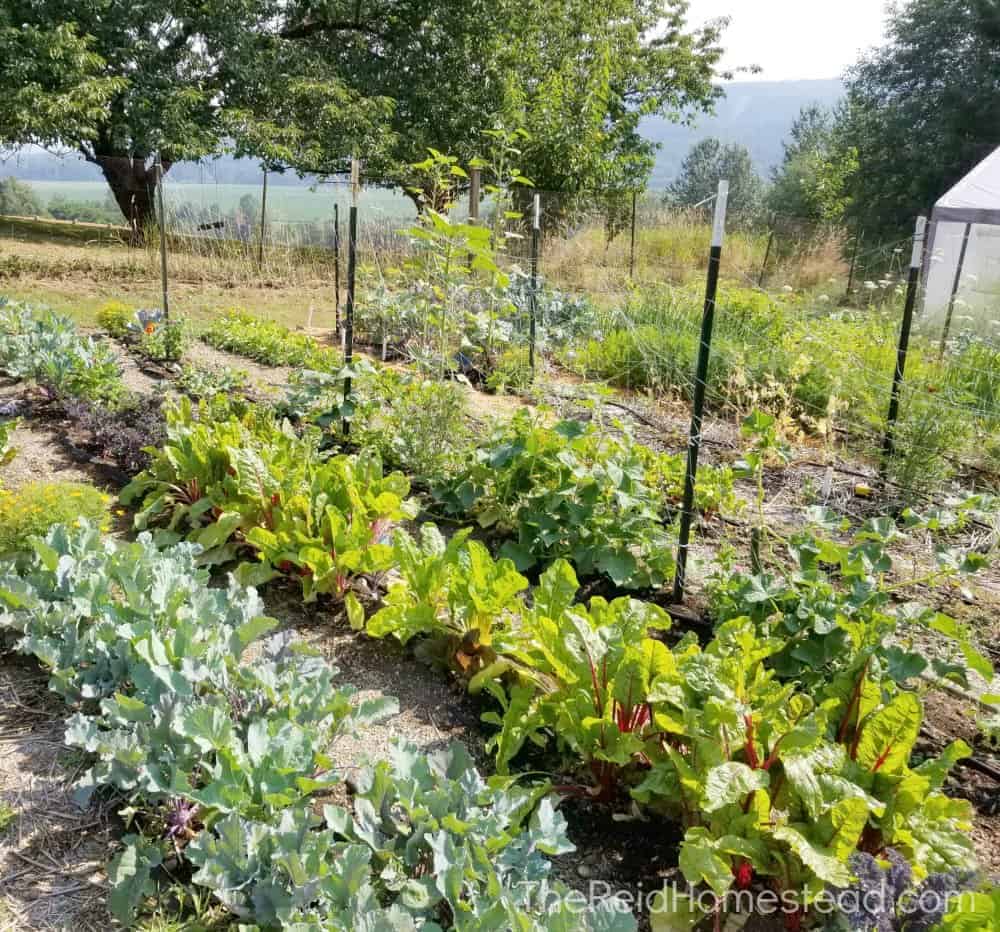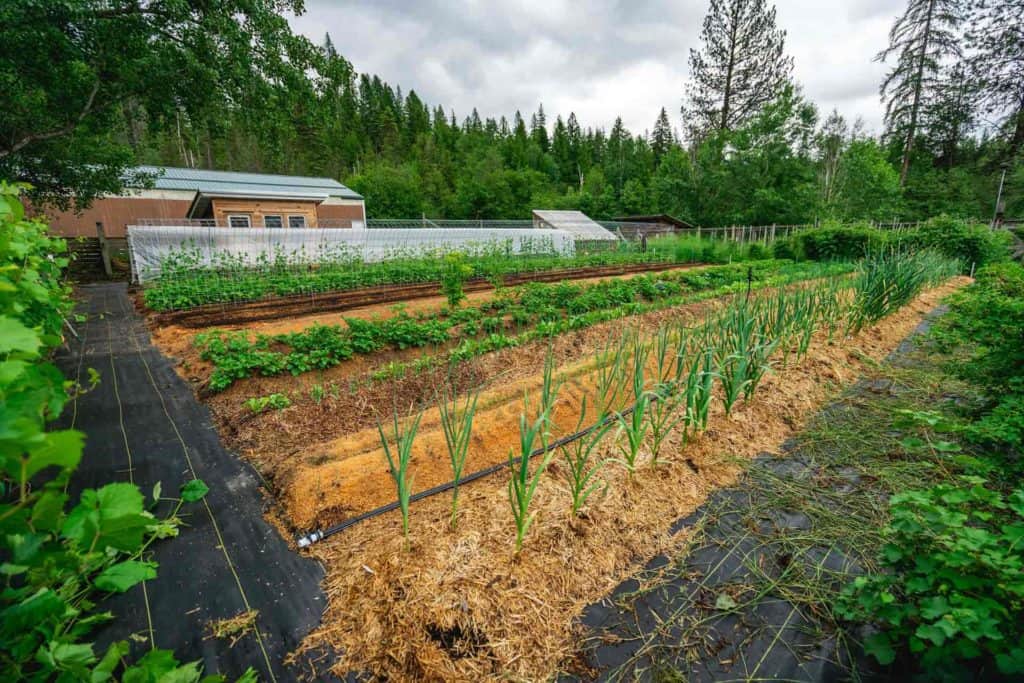Enjoy the Benefits of Homestead Gardening
Enjoy the Benefits of Homestead Gardening
Blog Article
Discover Important Tips for Effective Horticulture Techniques and Practices
Gardening, typically viewed as a straightforward pastime, includes a series of techniques and practices that can substantially affect the end result of your efforts. By prioritizing vital components such as dirt wellness, effective watering techniques, and suitable plant choice, garden enthusiasts can develop a growing ecosystem that supports vibrant growth. Comprehending the subtleties of bug administration and seasonal maintenance can additionally improve efficiency. Yet, numerous lovers neglect vital details that can make or break their horticulture success-- discovering these forgot facets might expose the key to cultivating a prospering yard.
Recognizing Soil Wellness
Soil wellness is a fundamental facet of successful horticulture, as it directly influences plant growth, vitamins and mineral availability, and ecological community balance. Healthy and balanced soil is defined by a rich biodiversity of microbes, natural matter, and a balanced pH degree, which together create an environment for plant growth.
To understand soil health and wellness, one should consider its physical, chemical, and organic properties. The texture and structure of soil influence its capability to maintain wetness and nutrients, while the chemical make-up figures out the availability of essential aspects like nitrogen, potassium, and phosphorus. Normal soil screening is vital to examine these aspects, allowing garden enthusiasts to make educated choices relating to plant foods and changes.
Furthermore, promoting organic activity within the dirt is crucial for keeping its health. Practices such as composting, crop rotation, and using cover plants can improve microbial diversity, enhance nutrient cycling, and minimize dirt disintegration. By focusing on soil health and wellness, garden enthusiasts not just enhance plant development however likewise add to a sustainable environment, making sure that their horticulture methods are resilient and environmentally responsible over time.
Reliable Sprinkling Methods
Making sure that plants get the ideal amount of water is vital for their health and development, specifically when combined with a solid foundation of soil wellness (Homestead Gardening). Effective sprinkling techniques can considerably impact plant vitality, lowering water waste and promoting optimum growth
One essential method is deep watering, which urges roots to expand deeper right into the soil, boosting drought resistance. This strategy usually involves sprinkling less often yet in larger amounts, enabling dampness to penetrate the origin area thoroughly. Timing is likewise essential; morning is the perfect time to water, as it lessens evaporation and enables vegetation to dry throughout the day, reducing illness threats.
Additionally, utilizing compost can help maintain dirt moisture and control temperature level, further helping effective sprinkling practices. Using a drip watering system can additionally offer targeted wetness straight to the origins, guaranteeing that water reaches where it's most required while preserving resources.
Keeping track of rains and dirt dampness levels can direct modifications in your watering timetable, making certain plants receive constant hydration without over-saturation. By embracing these efficient sprinkling strategies, garden enthusiasts can foster a flourishing atmosphere for their plants to grow.
Plant Option and Positioning
Just how can the appropriate plant selection and strategic placement transform a garden into a flourishing community? The synergy between plant varieties and their placement is essential for producing a dynamic garden. When selecting plants, consider elements such as climate, soil kind, and sunshine direct exposure. Indigenous types are typically the finest option as they are adapted to local conditions and call for much less maintenance.
Strategic positioning includes organizing plants helpful hints according to their growth behaviors and demands. Taller plants need to be placed at the back of borders to stop shielding shorter plants. In addition, organizing plants with similar water and light needs can improve their growth and lower competition for sources.
Including a variety of plants not just adds aesthetic charm but additionally promotes biodiversity, attracting helpful bugs and pollinators. Think about the seasonal adjustments in your yard; select a mix of evergreens, annuals, and perennials to ensure year-round interest.
Lastly, keep in mind to evaluate the mature size of plants before planting to stay clear of congestion and ensure ample air circulation. Thoughtful plant option and strategic positioning develop a harmonious setting, allowing your yard to prosper while reducing obstacles.
Pest and Illness Monitoring
Effective bug and condition management is necessary for maintaining a healthy yard ecological community - Homestead Gardening. A proactive technique, incorporating cultural, biological, and chemical techniques, can dramatically reduce the impact of bugs and conditions on your plants

Biological controls, such as introducing useful bugs like ladybugs or predative termites, can maintain bug populaces in check without hurting the atmosphere. Furthermore, preserving plant health and wellness with appropriate watering, fertilization, and pruning will bolster their resilience versus conditions.
When treatment is needed, go with targeted chemical treatments, guaranteeing to follow application guidelines to minimize injury to non-target microorganisms. Always prioritize lasting techniques, as they advertise long-lasting garden wellness and eco-friendly balance. By integrating these strategies, garden enthusiasts can successfully handle insects and diseases, guaranteeing thriving plants and an effective yard.

Seasonal Maintenance Practices
In spring, emphasis on soil prep work by testing pH degrees and adding needed amendments. Consistently check arising plants for illness and pests.
As summertime approaches, make sure adequate irrigation while monitoring for indications of stress or condition. Trim back thick plants to urge air flow and reduce humidity around vegetation. This practice not only boosts plant health however additionally promotes blooming and fruiting.
With the arrival of fall, it's time to prepare for wintertime. Tidy up fallen leaves and debris to avoid pest invasions, and take into consideration planting cover crops to enhance dirt wellness. This season is likewise excellent for dividing perennials and planting spring-flowering bulbs.
Final Thought
Successful gardening hinges on the integration of audio techniques in soil health and wellness, watering, plant selection, pest monitoring, and seasonal upkeep. By prioritizing soil screening and microbial variety, utilizing effective sprinkling approaches, and choosing suitable plants, gardeners can develop prospering environments.
By prioritizing essential components such as dirt health, reliable sprinkling techniques, and appropriate plant option, gardeners can develop a successful community that supports lively growth. By focusing on soil wellness, garden enthusiasts not only enhance plant growth yet likewise add to a sustainable ecosystem, making sure that their gardening techniques are resistant and environmentally liable over time.
Taller plants ought to be placed at the back of borders to protect against shading much shorter plants. Tidy up fallen leaves and particles to prevent bug infestations, and think about growing cover crops to improve soil health and wellness.Effective gardening hinges on the combination of audio practices in soil wellness, watering, plant selection, bug monitoring, and seasonal maintenance.
Report this page